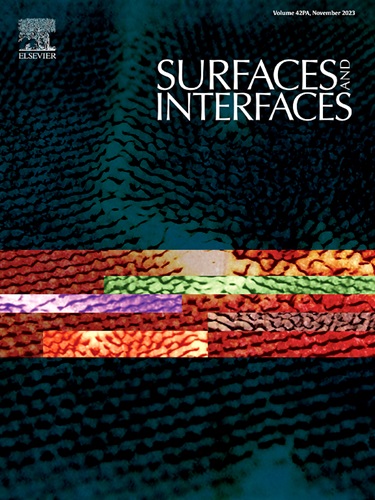Unveiling migration mechanisms of Mg and Sc atoms at ScAlMgO4-GaN interfaces
IF 5.7
2区 材料科学
Q2 CHEMISTRY, PHYSICAL
引用次数: 0
Abstract
The structures and stability of ScAlMgO4 (SAM)-GaN interface are systematically investigated via first-principles calculations. The mechanisms by which Mg and Sc atoms diffuse into GaN from the SAM substrate under different structural configurations are studied. Energy calculations identified the Sc–O-terminated surface as the most stable one for SAM, followed by a configuration with one Mg(Al)–O layer above the Sc–O layer. Interfacial energy calculations revealed distinct preferences for GaN growth polarity: the Sc–O surface favors bonding with Ga atoms, leading to N-polar GaN growth, while the Mg–O surface preferentially bonds N atoms, resulting in Ga-polar growth. Defect formation energy analysis shows Mg and Sc atoms do not readily diffuse individually from SAM into GaN. In the Sc–O terminated structure, Mg can occupy six-coordinated interstitial sites within GaN under excess Mg conditions. For Sc atoms, direct diffusion through the interface into GaN is also unlikely. However, in the Mg–O terminated structure, dissociated Sc atoms in interfacial region can bind to interstitial sites within GaN, a behavior absent in the Sc–O terminated structure. These findings highlight the critical role of interfacial structure in controlling of Mg and Sc doping, which is crucial for the growth of lattice-matched GaN on SAM. Electronic structure analyses of Mg- or Sc-doped GaN under experimentally relevant concentrations revealed that Sc diffusion into interstitial sites reduces the GaN bandgap, potentially shifting its emission toward longer wavelengths. This study provides insights into precise control of Sc and Mg atoms at SAM-GaN interfaces, offering a pathway for optimizing the electronic and optical properties of GaN grown on SAM substrates.

求助全文
约1分钟内获得全文
求助全文
来源期刊

Surfaces and Interfaces
Chemistry-General Chemistry
CiteScore
8.50
自引率
6.50%
发文量
753
审稿时长
35 days
期刊介绍:
The aim of the journal is to provide a respectful outlet for ''sound science'' papers in all research areas on surfaces and interfaces. We define sound science papers as papers that describe new and well-executed research, but that do not necessarily provide brand new insights or are merely a description of research results.
Surfaces and Interfaces publishes research papers in all fields of surface science which may not always find the right home on first submission to our Elsevier sister journals (Applied Surface, Surface and Coatings Technology, Thin Solid Films)
 求助内容:
求助内容: 应助结果提醒方式:
应助结果提醒方式:


